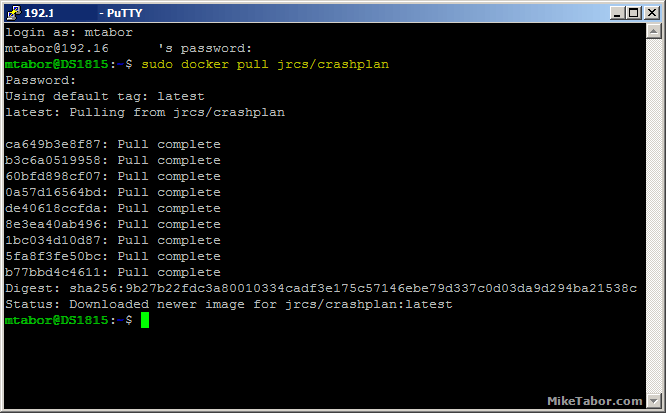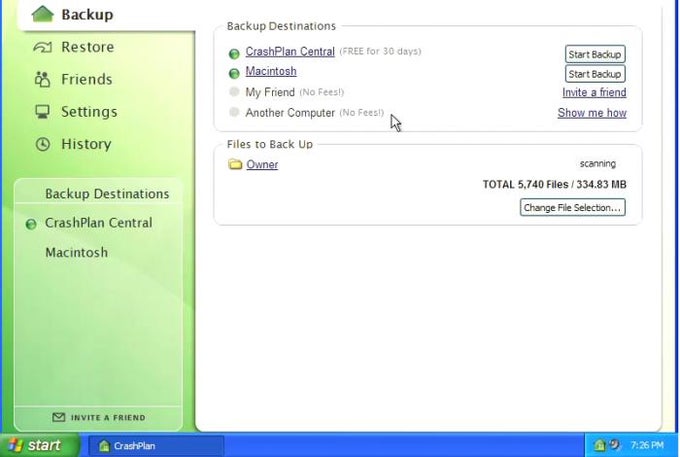

- #Crashplan port forwarding how to
- #Crashplan port forwarding utorrent
- #Crashplan port forwarding windows

In addition, NAT-PMP-capable applications set ‘Requested Port Mapping Lifetime’ to zero during the graceful shutdown process to age-out created PAT entries upon exit.īoth ‘Map UDP Request’ and ‘Map TCP Request’ should be followed by corresponding response packets. This is to make sure that the new lifetime of the translation will be set with the following packets and may be useful if the application was previously shut down unexpectedly and required Port Forwarding translation still exists on the NAT gateway. This means the first thing that NAT-PMP client normally tries to do is to age-out existing similar Port Forwarding translation on NAT gateway. Requested Port Mapping Lifetime – a lifetime of the Port Forwarding entry.Īs we can see for the very first packet, ‘Requested Port Mapping Lifetime’ is set to zero.Requested External Port – the external port that should be allocated on a NAT gateway.Internal Port – UDP/TCP port on which application (uTorrent in our case) is going to listen.This packet includes the following important information:
#Crashplan port forwarding utorrent
Eventually, these and some other factors most likely would prevent B from communicating with A, especially if B also sits behind another NAT gateway(s).Īs you can notice from the picture, uTorrent client is trying to establish a connection with the router on port UDP 5351. TCP session initiated by outside host may be blocked by firewall (SYN-packet arriving on outside interface can be dropped due to PAT unidirectional principle). Even if B knows A public IP address, it may be not aware of the correct transport level port to establish the connection. However, what will happen when B requires to initiate a connection to A? Depending on NAT implementation on R1 and type of traffic (ICMP, UDP, TCP, IPsec, etc) the result can be different but in the most common case, the communication will be simply rejected. When A needs to communicate with B, we do not have any problem with it and 100% of PAT-compatible gateway will be able to provide the required translation ‘private IP:private port’ pair to ‘public IP:public port’ pair. This is a very popular scenario for a small office/branch connection to the Internet and this is the only available option in our home networks. It is worth mentioning that R1 is performing dynamic port address translation (PAT) for traffic initiated by A (host in LAN) to B (host in WAN) and not vice-versa.

On the NexentaStor server I've examined the /etc/ssh/sshd_config file and everything seems 'normal' - and I've commented out the ListenAddress entries to ensure that I'm listening on all interfaces.Imagine, we have host A that sits behind NAT gateway R1 (usually physical or virtual router or firewall).
#Crashplan port forwarding windows
21:10:09 Opening forwarded connection to localhost:4243īut the telnet localhost 4200 command from Windows does nothing at all - it just waits with a blank terminal. 21:09:57 Local port 4200 forwarding to localhost:4243 The PuTTY log for the tunnelled connection shows reasonable output. With nothing more, although the Crashplan server should respond with something.įrom Windows, using PuTTY I have followed the instructions on the Crashplan support site to establish an equivalent tunnel, but then telnet on Windows gives me no response at all and the Crashplan GUI can't connect either. Things I have triedĮnsuring the Crashplan server on the Nexenta box is listening on port 4243 $ netstat -na | grep LISTEN | grep 42Įstablishing a tunnel from a Linux host: $ ssh -L 4200:localhost:4243 admin:10.0.0.56Īnd then, from another terminal on the Linux host, using telnet to verify the tunnel: $ telnet localhost 4200
#Crashplan port forwarding how to
A blog article - CrashPlan for Backup on Nexenta - indicates that it could be made to work only after "after enabling TCP forwarding in Nexenta in /etc/ssh/sshd_config" - although I'm not sure how to go about that or specifically what I need to do. I'm fairly sure the problem is at the receiving end with NexentaStor. So far, I've failed to get a working SSH tunnel from from either either a Windows client (using Putty) or a Linux client (using command line SSH). I am attempting to configure an SSH tunnel to a NexentaStor appliance from either a Windows or Linux computer so that I can connect a Crashplan Desktop GUI to a headless Crashplan server running on the Nexenta box, according to these instructions on the Crashplan support site: Connect to a Headless CrashPlan Desktop.


 0 kommentar(er)
0 kommentar(er)
